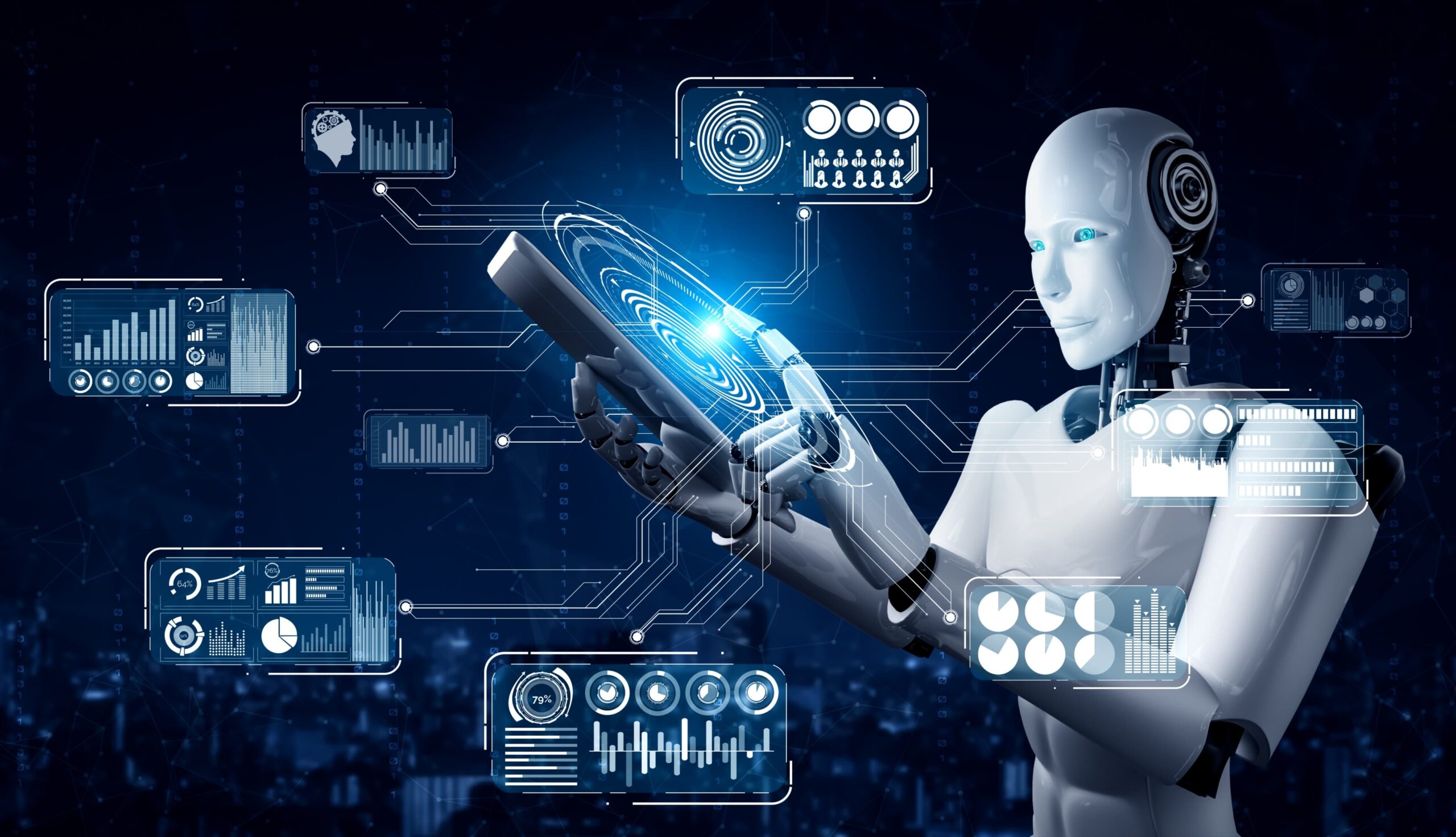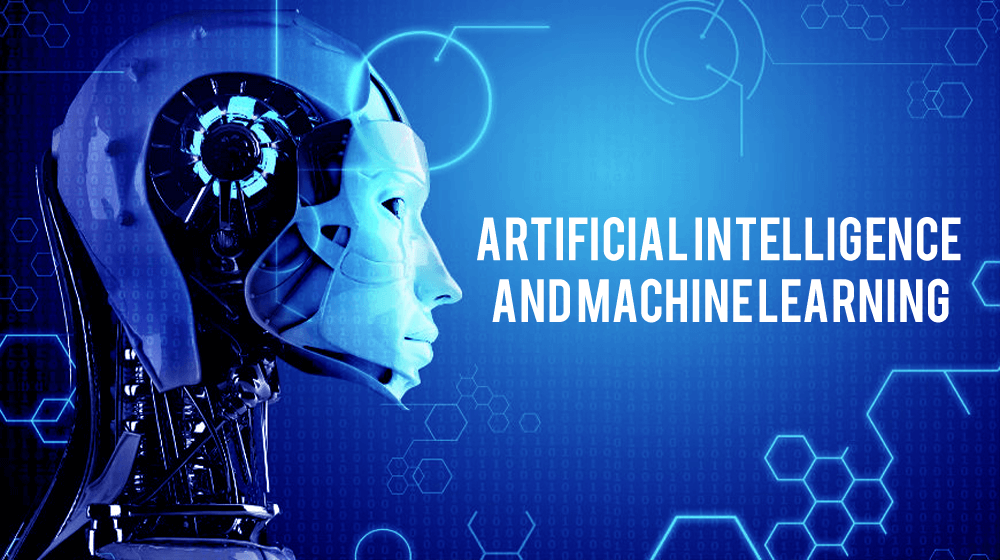Introduction:
Artificial Intelligence and Machine Learning In the rapidly evolving landscape of technology, two conditions that have gained immense importance are “false intelligence (AI)” and “machine education (ML).” These cutting-edge fields are revolutionizing an assortment of industries, influencing our daily lives, and reshaping the future. In this article, we will embark on a journey to walk around the intricacies of AI and ML, disentangle their meaning and applications, and explore the transformative collisions they contain with society.
Understanding Artificial Intelligence:
Reproduction intelligence refers to the expansion of computer systems capable of theater tasks that typically require human intelligence. These tasks encompass problem-solving, speech recognition, learning, planning, and understanding natural language. AI systems can be categorized into two types: narrow AI and general AI. Narrow AI, also known as weak AI, is designed to perform a specific task, while general AI aims to possess the ability to understand, learn, and apply knowledge across diverse domains.
The Evolution of AI:
The perception of AI dates back to ancient times, other than when the term gained distinction in the mid-20th century. However, recent advancements in computing power, big information, and algorithms have propelled AI into a new era. Mechanism knowledge, a subset of AI, plays a pivotal role in this development.
Computer Information: From Abacus to Artificial Intelligence
Introduction to Machine Learning:
Appliance learning is a branch of AI that focuses on the development of algorithms and arithmetical models that enable computer systems to achieve a task without explicit instruction. Instead of organisms being explicitly automatic, ML systems learn from data, allowing them to improve their presentation over time.
Supervised and unsupervised learning:
Inside the realm of machine learning, there are two primary learning paradigms: supervised and unsupervised knowledge. Supervised learning involves training a representation on labeled data, where the algorithm learns to map inputs to corresponding outputs.
Technology and Programming: Navigating the Ever-Changing
Applications of AI and ML:
The applications of AI and ML are vast and varied, permeating almost every feature of our lives. In finance, ML algorithms analyze marketplace trends, detect fraud, and optimize trade strategy. AI-driven virtual assistants like Sire and Alexia have become essential parts of our daily routines, showcasing the authority of natural language processing. In addition, industries such as development, transportation, and education are harnessing the potential of AI and ML to improve efficiency and decision-making.
Challenges and Ethical Considerations:
While AI and ML hold huge promise, they also pose challenges and moral considerations. Prejudice in AI algorithms, privacy concerns, and the potential for job disarticulation are issues that need careful attention. It is crucial to ensure that AI systems are transparent, answerable, and adhere to ethical principles to prevent unintentional consequences.
The Future of AI and ML:
The future of AI and ML is both thrilling and daunting. Artificial intelligence (AI) is anticipated to become increasingly significant in automating intricate work, stimulating creativity, and resolving pressing global issues as technology advances. However, addressing ethical concerns, developing accountable AI expansion, and ensuring inclusive access to this technology are essential for a constructive and equitable future.
Artificial intelligence
Artificial intelligence and machine learning are dynamic fields that are reshaping the way we live and work. The fusion of person intelligence with mechanism capabilities is unlocking new potential, from personalized healthcare to elegant cities. As we navigate this era of technological alteration, it is crucial to approach AI and ML with an impartial perspective, embracing modernism while being watchful of ethical considerations. The expedition of AI and ML is ongoing, and the marvels they unfold are jumping to shape the future of humankind in ways we can only start to imagine.
Emerging Trends and Real-World Impact:
As we delve deeper into the realms of reproduction intelligence and mechanism learning, it’s necessary to discover the emerging trends that are determining the trajectory of this technology. The convergence of AI using other cutting-edge fields is a charitable rise to innovation that has tangible impacts on our daily lives.
-
Edge computing and AI:
One distinguished trend is the integration of AI with border computing. Conventionally, AI models relied on influential centralized servers for processing data. On the other hand, with the rise of edge computing, AI computations are performed closer to the data source, reducing latency and enabling real-time decision-making. This is particularly significant in applications like independent vehicles and IoT devices, where instantaneous responses are crucial.
-
Explainable AI (XAI):
As AI systems become more multifaceted, the need for clarity and interpretability grows. Explainable AI, or XAI, is a growing field that focuses on making AI models more comprehensible to humans.
-
AI in Creativity:
AI has made great advancements in the field of creativity and is not just for use in analytical activities. Human-like writing and even unique symbols may be produced via generative models, such as Opener’s GPT-3. AI is being utilized in the art sector to produce music, chart art, and contribute to the creative process in previously unthinkable ways.
-
AI for Climate Change Solutions:
With the type of weather change looming as a global confrontation, AI and ML are being harnessed to expand innovative solutions. From optimizing energy consumption to predicting extreme weather events, these technologies play a pivotal role in addressing environmental concerns.
-
Continual Learning and Adaptability:
Customary machine knowledge models often require retraining when faced with new data. Repeated knowledge, a burgeoning concept, focuses on enabling AI systems to adapt and learn continuously from new information without discarding previous knowledge. This is crucial in dynamic environments where data is constantly evolving, ensuring that AI models remain relevant and effective over time.
Ethical Considerations and Responsible AI:
As AI and ML technologies advance, it is imperative to address ethical considerations to build trust and ensure responsible development. Bias in algorithms, ethical use of AI in surveillance, and the impact on employment are critical areas that demand attention. Initiatives for creating ethical guidelines and frameworks for AI development are gaining traction, emphasizing the importance of responsible AI practices.
Collaborative efforts between technologists, ethicists, policymakers, and communities are necessary to strike a balance between innovation and ethical considerations.
Conclusion:
Artificial intelligence and machine learning continue to reshape the world, offering solutions to complex problems and transforming industries. These domains are dynamic and need ongoing research and trend adaptation. A comprehensive strategy that takes into account ethical concerns, fosters creativity and guarantees inclusion is essential as we traverse the rapidly changing field of machine learning. This will ensure that these technologies will ultimately advance humankind.


